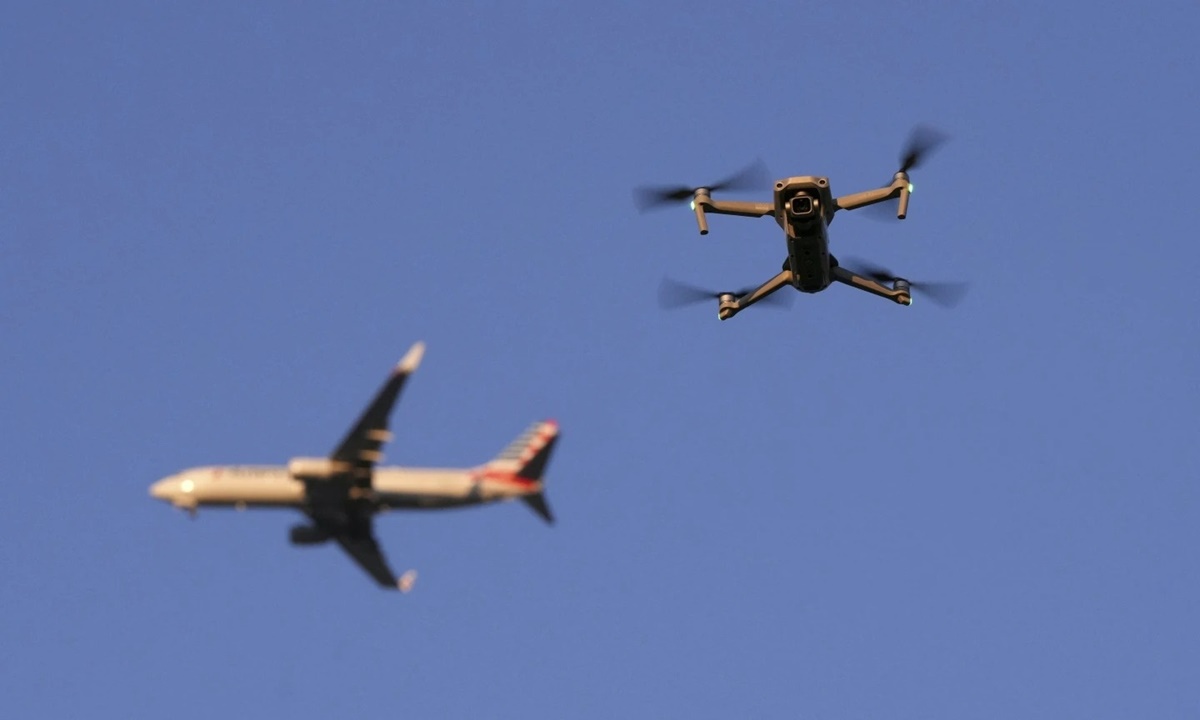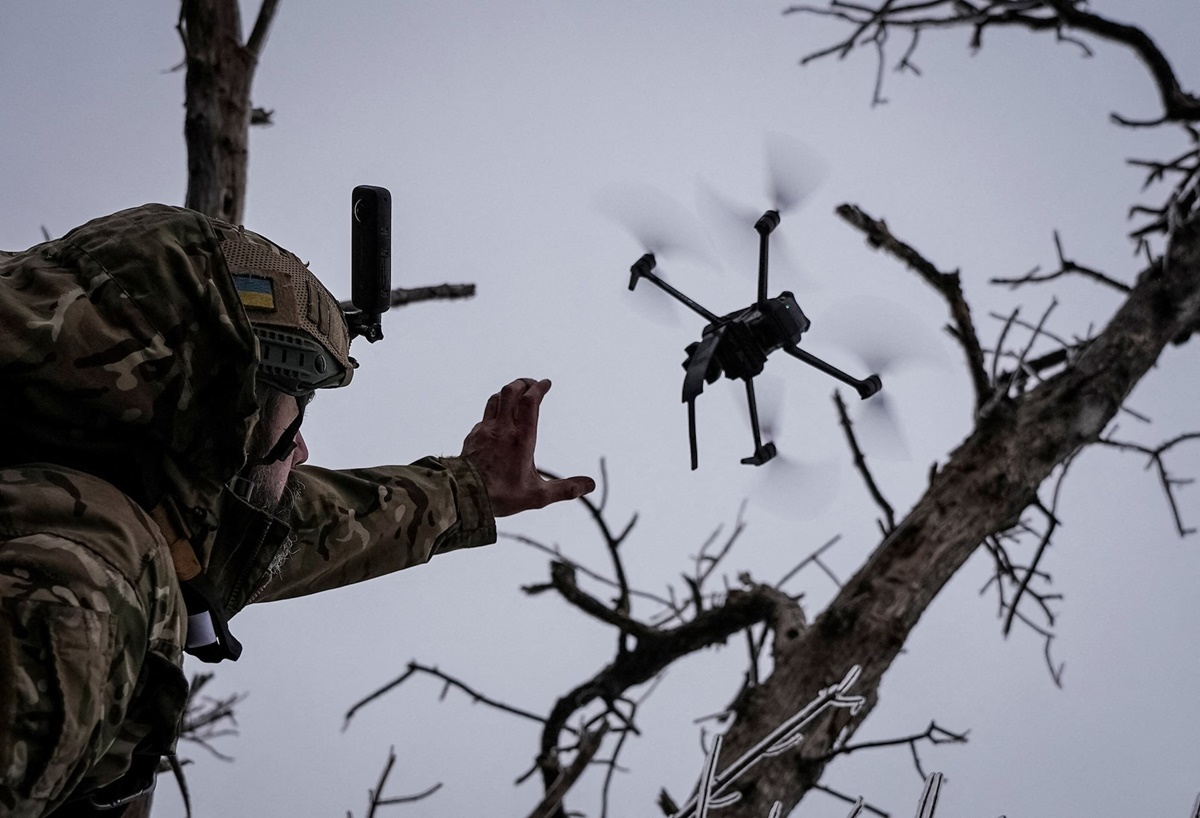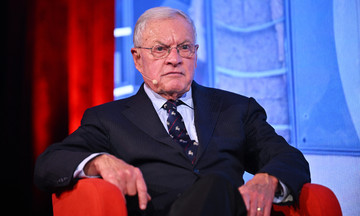The Pentagon has intensified efforts to bolster drone defenses at overseas bases over the past 18 months, following the deaths of three army reservists in a January 2024 attack on a Jordanian military base by Iranian-backed militia.
However, recent Israeli and Ukrainian drone strikes deep inside enemy territory have revealed a potentially larger vulnerability.
 |
A drone flies near St. Louis Lambert International Airport in 3/2025. Photo: AP |
A drone flies near St. Louis Lambert International Airport in 3/2025. Photo: AP
Experts point to Israel's preemptive drone strikes against Iranian air defenses at the outset of their recent conflict, and Ukraine's "Spider Web" operation targeting Russian strategic bomber bases, as clear demonstrations of the drone threat – not just abroad, but potentially within the US as well.
US defense contractors are promoting new technologies they claim can effectively counter drones. They hope the Pentagon's planned multi-billion dollar investment in defensive systems under Project Golden Dome will include funding for these anti-drone platforms.
Some of these systems eschew traditional ammunition, instead employing directed energy beams to neutralize multiple drones simultaneously. The US military has conducted at least two high-energy microwave system tests, one in the Middle East and another in the Pacific, paving the way for larger investments.
Epirus, a microwave defense system developer, warns that the proliferation of new drone models on the battlefield presents the US with a form of "machine guerrilla warfare" – a concept alien to the Pentagon's traditional thinking.
Andy Lowery, CEO of Epirus, notes the rapid evolution of drone warfare between Russia and Ukraine. "What we’re seeing in Russia could absolutely happen here. The 'Spider Web' operation should be a real wake-up call to us, and frankly the rest of the world, that this is very, very serious," he emphasized.
Ukraine, with US support, has invested heavily in drone technology, developing models capable of attacking warships, aircraft, and vehicles. US officials estimate drones are responsible for roughly 70% of recent Russian casualties.
In early June, during Operation Spider Web, Ukrainian intelligence infiltrated drones deep into Russian territory, striking multiple air bases simultaneously and destroying at least 10 strategic bombers. The attack highlighted the effectiveness of inexpensive, easily concealed drones against conventional military forces.
"We’ve been astounded by how quickly Ukraine has adapted to new technologies," Lowery said.
Conversely, the Russian military is also rapidly developing and deploying long-range UAVs like the Geran-2, decoys, tactical suicide UAVs like the Lancet, and first-person view (FPV) drones.
Iranian-developed drones are also being employed by pro-Tehran forces across the Middle East.
Experts believe adapting anti-drone strategies poses a significant challenge for the US.
"This is a 9/11/2001 type of problem, and we’re still operating with a pre-9/11 mindset. After a catastrophic attack, there will be all sorts of evidence that we should have seen it coming," commented Christian Brose, chief strategy officer at Anduril, a defense company specializing in anti-drone technology for the US military.
Pentagon officials maintain they are taking the drone threat seriously and are increasing investments in defensive capabilities.
Ukrainian drone strikes on Russian aircraft on 1/6. Video: SBU
In recent years, US commanders, particularly in the Middle East, have focused on building multi-layered defense networks – including jamming equipment and air defense systems – to counter drone, rocket, and missile attacks.
Admiral Charles B. Cooper II, nominated by President Donald Trump to lead CENTCOM (the US military's Central Command responsible for operations in the Middle East), stated last month that US forces have made "significant improvements across the board" since the Jordan attack.
"We have really made tremendous strides since the attack. I’ll never be satisfied, however, until we have maximized our readiness," he said.
Brose and other experts warn, however, that the drone threat extends beyond US bases overseas.
Washington has recorded multiple incidents of unidentified drones approaching military installations, including Langley Air Force Base and the world's largest naval base in Norfolk. These incursions often pose significant challenges for the US military, hindered by difficulties in tracking drones and regulations governing responses.
Lowery points to the Pentagon's decision not to cut funding for anti-drone systems during recent streamlining efforts as evidence of their recognition of the threat's severity.
In congressional hearings last month, Secretary of Defense Pete Hegseth faced repeated questioning about US vulnerability to drone attacks. He acknowledged that inexpensive, single-use commercial drones carrying small explosive charges represent "a real emerging threat".
Secretary Hegseth revealed that he met with Chairman of the Joint Chiefs of Staff Dan Caine and other top aides immediately following Ukraine's "Spider Web" operation to ensure adequate protection for forces both within the US and abroad.
The Pentagon recently approved the creation of a new, army-led organization to address drone warfare and countermeasures. This organization is modeled after an agency established two decades ago to combat improvised explosive devices (IEDs) frequently used by militant groups against US forces in Iraq and Afghanistan.
 |
Ukrainian soldiers deploy a suicide drone in Donetsk province in 2023. Photo: Reuters |
Ukrainian soldiers deploy a suicide drone in Donetsk province in 2023. Photo: Reuters
The US Army remains responsible for overseeing drone defense across all branches of the military. However, analysts argue their anti-drone capabilities, built on older technologies, are struggling to adapt to the rapid evolution of drones witnessed in Ukraine.
Experts believe a robust drone defense system requires integrating multiple neutralization methods, a capability currently lacking in the US Army's existing platforms.
Anduril's system combines detection methods with various neutralization options, including shooting down and jamming drones. Proponents of this technology argue that such innovations demonstrate the US government doesn't need to reinvent anti-drone systems, but rather rapidly adopt existing new technologies.
Many US anti-drone technology companies have frequently complained that government regulations are hindering development.
Lowery compares the drone threat to the iconic scene in Star Wars where a small spacecraft penetrates a much larger Death Star, plants a bomb, and blows it to smithereens. "That's the reality now, it’s not a movie anymore," he said.
Vu Hoang (According to AFP, Reuters, AP)












